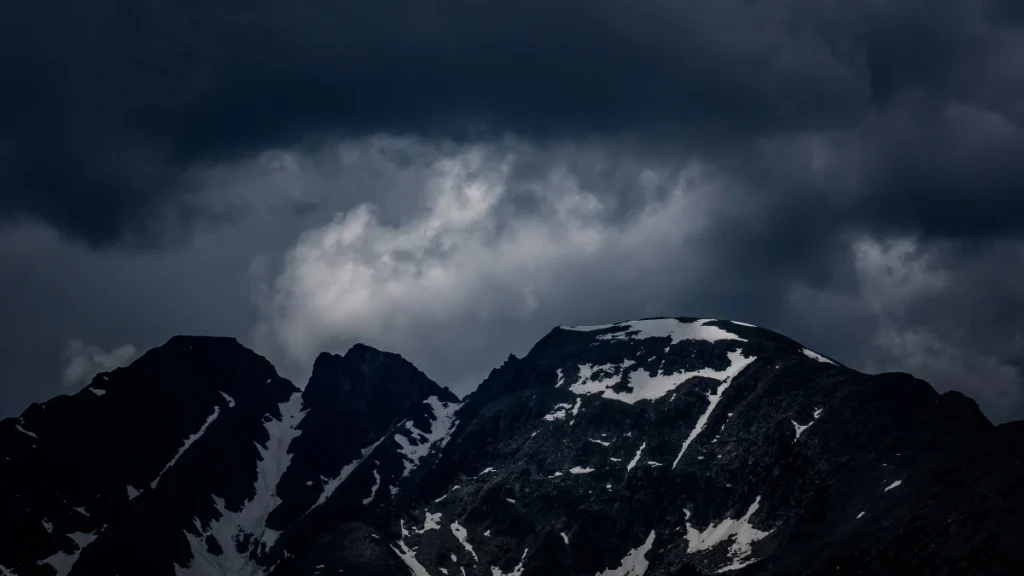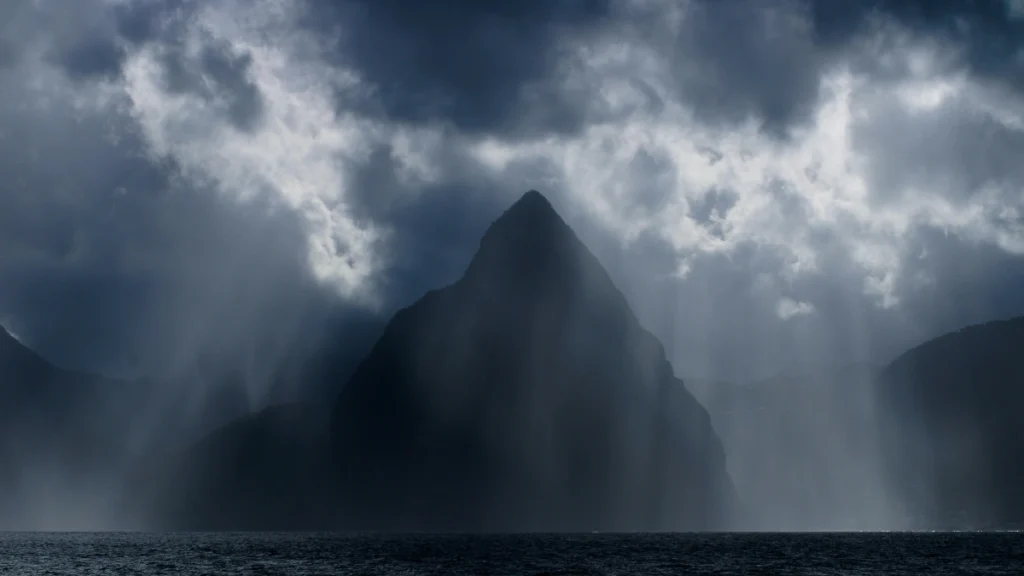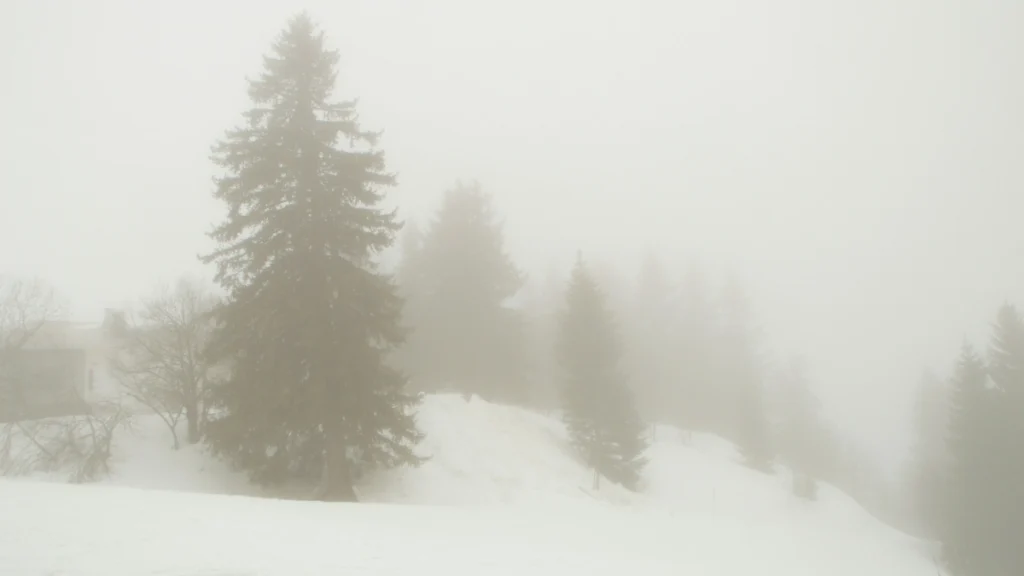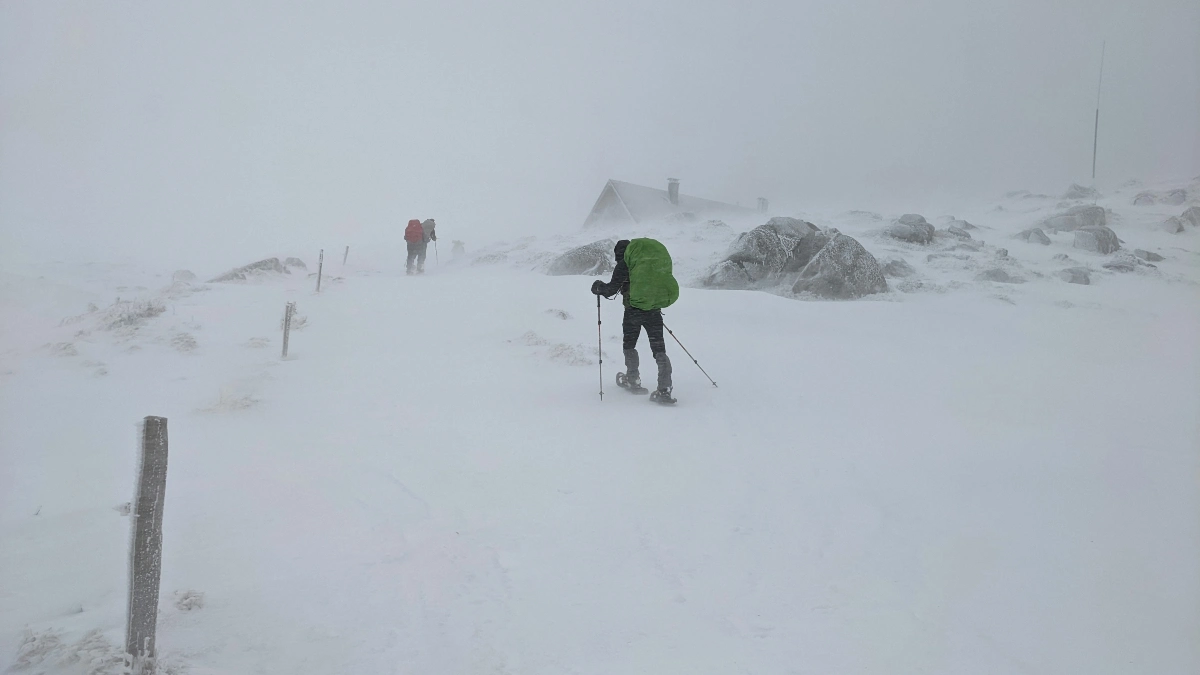The perfect hike starts with a blue sky and a promising forecast, but nature’s most dangerous traps are often set on these exact days.
Many hikers check the weather at the trailhead but don’t know how to interpret the dynamic changes in the sky and environment around them. This creates a false sense of security that can lead to disaster.
You might see a clear sky and think you are safe, but the truth is that serious weather can appear very quickly.
This guide will move beyond a simple forecast. It will teach you how to identify five specific weather patterns in real-time from subtle cloud formations to changes in air pressure and what immediate actions to take to stay safe. Knowing these real-world hiking safety tips is key to avoiding dangerous weather for hiking.
1. Sudden Thunderstorms: When a Clear Sky Turns Deadly

You’re hiking up a mountain on a warm afternoon. What starts as small, puffy white clouds can quickly become a serious threat. In the mountains, warm, moist air is pushed up the slopes by the wind. As it rises, it cools and forms clouds. This process can happen with shocking speed. A sunny day can turn into a dangerous thunderstorm in less than an hour.
Early Warning Signs to Watch For
The first sign is a change in the clouds. Look for innocent-looking cumulus clouds that start growing taller, like towers of cotton. If their tops begin to flatten out into an anvil shape, a storm is forming. You may also notice the wind picking up, the sky getting darker on the horizon, or a sudden, strange calm. These are all signs that mountain weather changes are happening.
The Real Dangers of a Thunderstorm
The most obvious danger is lightning. As the National Weather Service (NWS) often states, “When thunder roars, go indoors.” There is no safe place outside during a thunderstorm. But it’s not just about a direct strike. Lightning can hit a tree or rock and splash onto you. Storms also bring hail, which can cause injury, and strong downward winds called microbursts that can disorient you and cause a sudden drop in temperature.
Your Immediate Action Plan
- Get Down: If you are on a ridge, peak, or any high point, descend immediately. Don’t wait.
- Avoid Shelter Traps: Do not hide under a lone tree or next to a tall rock. These are natural lightning rods. Find a low spot, like a valley or a dense group of smaller trees.
- Assume the Position: If you are caught in the open with nowhere to go, use the lightning safety position as a last resort. Squat down on the balls of your feet, keep your feet together, and cover your ears. This makes you a smaller target and minimizes your contact with the ground.
Thunderstorm Warning Signs
Early Visual Cues
- Puffy clouds start growing tall and look like towers.
- Tops of clouds flatten out into an “anvil” shape.
- Darkening horizon and a sudden increase in wind.
Immediate Action Plan
- Get Down: Descend from peaks and ridges immediately.
- Avoid Shelter Traps: Stay away from lone trees & tall rocks.
- Last Resort: Assume the lightning safety position if caught in the open.
2. Flash Floods: The Danger of Rain Miles Away

Imagine you’re walking through a narrow canyon. The sun is shining right above you. It feels perfectly safe. But the greatest danger in a flash flood canyon isn’t the weather you can see; it’s the storm happening 10 or 15 miles upstream that you know nothing about. That distant rain is gathering into a powerful wall of water headed your way.
Telltale Signs to Look For
You won’t see rain, but you can see the flood’s approach if you know what to look for. These signs are subtle but urgent.
- The water in the creek changes. It might go from clear to muddy brown in minutes.
- You see more debris in the water, like twigs, leaves, or even small branches.
- You hear a faint roaring sound in the distance that slowly gets louder.
The Power of a Flash Flood
A flash flood is not just rising water. It’s a fast-moving wall of water filled with mud, rocks, and logs. It can move faster than you can run and has enough force to move cars and boulders. In a narrow canyon, there is often nowhere to escape the water’s power.
Your Escape Plan: Get High, Fast
If you notice any of the warning signs, your response must be immediate.
- Do not hesitate. Do not try to figure out if it’s a false alarm.
- Seek higher ground immediately. Climb up the canyon walls as high as you can get.
- Stay there. Wait until you are certain the flood has passed. It is better to be safe than to risk coming down too early. Your life depends on getting to a high spot quickly.
Flash Flood: Danger From Afar
Telltale Signs (No Rain Needed!)
- Water in creek or wash suddenly turns muddy.
- Increase in floating twigs, leaves, or other debris.
- A faint roaring sound from upstream that gets louder.
Escape Protocol
A flood is faster and more powerful than you can imagine. Your response must be instant.
3. The Triple Threat: Wind, Rain, and a Temperature Drop

Hypothermia is one of the most common dangers for hikers, and it doesn’t just happen in the freezing cold of winter. In fact, most cases of hypothermia occur in air temperatures between 30 and 50°F (-1 to 10°C). When you add wind and rain to these cool temperatures, you create a perfect storm for stripping heat from your body.
How Wind Makes Cold Worse
Your body heat warms a thin layer of air around your skin. Wind blows this warm air away, forcing your body to work harder to stay warm. When your clothes are wet, this effect is much worse. For example, a 40°F day with a 30 mph wind feels like 28°F on your skin. This “wind chill” can quickly become dangerous.
Know the Early Signs: The “Umbels”
Hypothermia starts subtly. The best way to remember the early signs is with the “umbles.”
- Grumbles (bad mood, irritability)
- Mumbles (slurred or slow speech)
- Stumbles (clumsiness, poor coordination)
- Fumbles (difficulty with simple tasks, like zipping a jacket)
If you or someone in your group starts showing these signs, you need to act right away.
Your Prevention and Treatment Plan
The best defense is good preparation. Always carry layers of clothing (and never wear cotton, which stays wet). A waterproof rain jacket is one of the most important hiking safety tips. If you notice the “umbles,” stop your hike immediately. Find shelter from the wind, add a dry layer of clothing, and eat some high-energy food like a granola bar or chocolate.
Hypothermia: The “Umbels” Warning
The Danger Zone
It doesn’t have to be freezing. Wind and rain create a triple threat for heat loss.
Recognize Early Signs
Remember the “Umbels”:
4. Sudden Fog and Whiteouts: When the Trail Disappears

Have you ever been on a trail where you could see for miles, and then, in just a few minutes, you can’t even see the path ten feet in front of you? This is what happens in a sudden fog or whiteout. It can be caused by moist air moving in from the coast or by temperature changes that cause clouds to form right at ground level.
The Biggest Danger: Getting Lost
The main problem with fog is disorientation. Even on a trail you know well, it’s easy to get turned around when you can’t see landmarks. This can lead to you walking in circles, or worse, walking right off a cliff or into a dangerous area. The panic that sets in when you are suddenly alone in a sea of white makes it even harder to think clearly.
Navigation is Your Only Way Out
When you are caught in a fog, the most important thing to do is to stop moving. Fighting the fog will only get you more lost.
- Stay Put: Find a safe spot and wait. The fog might lift as quickly as it came.
- Use Your Tools: This is why you should always carry navigation tools and know how to use them. A GPS device or a phone with a pre-downloaded map (like from an app such as Gaia GPS or AllTrails) can show you exactly where you are.
- Have a Backup: Electronics can fail. A simple map and compass are essential backups that do not rely on batteries. Knowing how to use them is a critical skill for any serious hiker.
Lost in the Fog
Your 3-Step Survival Plan
STOP
Do not move. Fighting the fog will only get you more lost. Find a safe spot and wait.
LOCATE
Use a GPS device or a phone with pre-downloaded offline maps to find your position.
BACKUP
Always carry and know how to use a physical map and compass. Electronics can fail.
5. Extreme Heat: More Than Just a Bad Sunburn

Hiking on a hot, sunny day seems simple enough, but heat is a serious form of dangerous weather for hiking. The problem isn’t just the temperature; it’s the humidity. When the air is humid, your sweat cannot evaporate easily. Since evaporation is your body’s main way of cooling itself, high humidity can make you overheat quickly.
Heat Exhaustion vs. Heat Stroke
You need to know the difference between heat exhaustion and heat stroke. Heat exhaustion is serious, but heat stroke is a life-threatening emergency.
- Heat Exhaustion Signs: Heavy sweating, faintness, dizziness, nausea, headache, and cool, pale, clammy skin.
- Heat Stroke Signs: A high body temperature, confusion, no sweating, and hot, red skin.
If someone shows signs of heat stroke, they need immediate medical help. Get them into the shade and try to cool them down with water while you call for rescue.
Hydration is More Than Just Water
Drinking water is important, but when you sweat a lot, you also lose salts called electrolytes. If you only drink water, you can dilute the salts in your body, which is also dangerous. Be sure to eat salty snacks or use electrolyte tablets in your water. Plan to drink about one liter of water for every two hours you are hiking in the heat.
Your Proactive Heat Strategy
The best way to deal with heat is to avoid it. Hike early in the morning or late in the afternoon. Wear light-colored, loose-fitting clothes that cover your skin. And always carry more water than you think you will need.
Beat the Heat: Know the Difference
Heat Exhaustion
- ✔️ Heavy Sweating
- ✔️ Faintness / Dizziness
- ✔️ Nausea or Vomiting
- ✔️ Cool, Pale, Clammy Skin
Heat Stroke (EMERGENCY)
- ❌ NO Sweating
- ❌ Confusion / Altered Mental State
- ❌ Throbbing Headache
- ❌ Hot, Red, Dry Skin

